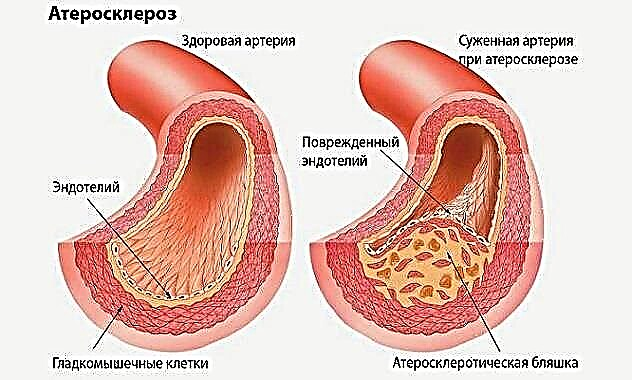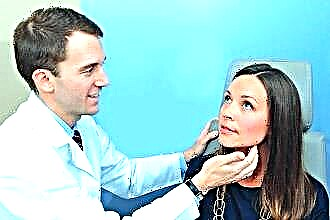Removal of tonsils is a surgical operation for excision of the palatine tonsils together with a peri-rectal capsule. Surgical intervention is performed exclusively if there are serious indications: frequent relapses of tonsillitis, adenoiditis, paratonsillar abscess, airway obstruction, etc. Implementation of the recommendations for the postoperative period allows you to speed up recovery and prevent the development of local complications.
 In the case of a favorable course of rehabilitation, the niches of the palatine tonsils are quickly covered with fibrin, which accelerates the process of tissue epithelialization. Compliance with the recommendations for drug therapy can prevent the development of septic inflammation. To eliminate postoperative local manifestations, such as tissue edema, hyperemia and fever, patients are prescribed antiphlogistic, decongestant and antipyretic drugs.
In the case of a favorable course of rehabilitation, the niches of the palatine tonsils are quickly covered with fibrin, which accelerates the process of tissue epithelialization. Compliance with the recommendations for drug therapy can prevent the development of septic inflammation. To eliminate postoperative local manifestations, such as tissue edema, hyperemia and fever, patients are prescribed antiphlogistic, decongestant and antipyretic drugs.
Rehabilitation program
Rehabilitation is a complex of medical measures aimed at compensating and quickly restoring the physiological functions of the body, lost as a result of tonsillectomy. Unlike surgical treatment, the program to restore the functions of the ENT organs is performed during the absence of the acute phase of pathological processes in the body.
After removal of the glands, the operated tissues are covered with granulations and, as a result, a new layer of epithelium. There is a risk of delayed bleeding in the first few days after tonsillectomy. Therefore, patients are advised to stay in the hospital for 2-3 days to make sure that there are no postoperative complications.
If all the recommendations provided by the rehabilitation program are followed, full recovery is observed 20-23 days after the operation. At the time of discharge, patients must adhere to a specific nutritional and medication plan:
- A sparing diet - prevents the occurrence of mechanical damage on the operated tissues; it is undesirable to eat solid and very hot food for 2-3 weeks, which can injure the mucous membrane of the throat;
- Avoidance of physical activity - prevents an increase in blood pressure and, as a result, the appearance of delayed bleeding;
- The passage of drug therapy - accelerates the process of tissue regeneration by stimulating cellular metabolism and local immunity.
At the time of discharge, patients are given a printed dietary program with clear recommendations. Its implementation guarantees the absence of postoperative complications and delayed bleeding in the oropharyngeal mucosa.
The first hours after surgery
Why is tonsillectomy dangerous? The postoperative period passes for most patients with certain difficulties, due to the appearance of extensive wound surfaces in the throat. The niches of the palatine tonsils can bleed for some time, therefore, immediately after the operation, the patient is taken to the ward and laid on his side, holding a towel to his mouth to spit out blood.
Aspiration of wound discharge (saliva, blood) can cause the development of pulmonary diseases.
To prevent the occurrence of bleeding, on the first day after the operation, the patient must follow several important rules:
- Be only in a supine position;
- Do not talk or eat;
- Drink only cooled sweetened tea.
Small children, a few hours after tonsillectomy, are allowed to eat a small amount of liquid semolina and drink a glass of milk jelly. To minimize the discomfort when swallowing, the patient is given an intramuscular injection of an analgesic.
Second day after surgery
In the first few days after tonsil removal there is a risk of bleeding. Therefore, patients are not recommended to gargle even with medicinal broths. To disinfect the oral cavity and prevent the development of bacteria, it is allowed to gargle with a solution of "Hydrogen peroxide" or "Streptocide".
there is a risk of bleeding. Therefore, patients are not recommended to gargle even with medicinal broths. To disinfect the oral cavity and prevent the development of bacteria, it is allowed to gargle with a solution of "Hydrogen peroxide" or "Streptocide".
From the products on the second day after tonsillectomy, you can use:
- milk and sour cream;
- soaked biscuits and bread;
- cream soups and mashed potatoes;
- grated fruits and vegetables;
- fruit juices and meat decoctions.
Important! Spicy food irritates the throat mucosa, which can lead to increased swelling in the tissues operated on.
To eliminate the pain syndrome, specialists administer Promedol to patients. The drug increases the threshold of pain sensitivity, but at the same time does not affect the functioning of the respiratory centers, which prevents the occurrence of nausea and vomiting reflex.
Third day after surgery
Recovery after removal of tonsils is a long and painful process that requires strict adherence to medical recommendations. Approximately on the third day of the rehabilitation period, patients feel an increase in pain when swallowing. This is due to the formation of fibrin plaque on the operated tissues, where a new layer of epithelial tissue will appear within the next 5-6 days.
An increase in regional lymph nodes and low-grade fever are signs of regeneration processes, and not septic inflammation of the throat mucosa.
A whitish plaque that occurs at the site of the tonsils begins to disappear as early as 6 days after tonsillectomy. After another 5-6 days, the niches of the glands are cleared of fibrin threads and by 21-23 days they are completely covered with a new layer of epithelial tissue. It should be noted that in children, the regeneration process proceeds faster, therefore, they are easier to tolerate operations than people of mature and old age.
Drug therapy
In order to optimize the rehabilitation period, operated patients need to undergo a full course of drug treatment. The classical scheme of therapy should include drugs that can prevent the development of pathogenic agents in the niches of the tonsils. These include:
- Antibiotics - prevent the development of opportunistic aerobic and anaerobic bacteria;
- Painkillers - inhibit the functioning of pain receptors, which leads to the elimination of pain syndrome.
- Vitamins - accelerate biochemical processes in tissues, which has a beneficial effect on tissue reactivity;
- Immunostimulants - stimulate the production of natural interferon, which increases non-specific immunity;
- Local antiseptics - disinfect the mucous membrane, which prevents the occurrence of septic inflammation;
- Anti-inflammatory drugs - prevent the synthesis of inflammatory mediators, thereby accelerating the regression of catarrhal processes;
- Coagulants - increase blood clotting, which prevents the occurrence of delayed bleeding.
Self-administration of drugs is one of the main causes of postoperative complications.
Antibacterial therapy
 Taking antibiotics is one of the key areas of drug therapy in the postoperative period. Antimicrobial drugs prevent the formation of purulent exudate in the operated tissues. For prophylactic purposes, it is recommended to use drugs of a wide spectrum of action. They destroy almost all existing types of gram-positive and gram-negative bacteria that can provoke infectious complications.
Taking antibiotics is one of the key areas of drug therapy in the postoperative period. Antimicrobial drugs prevent the formation of purulent exudate in the operated tissues. For prophylactic purposes, it is recommended to use drugs of a wide spectrum of action. They destroy almost all existing types of gram-positive and gram-negative bacteria that can provoke infectious complications.
During the first 7-10 days after surgery, patients take antibiotics of the cephalosporin and penicillin groups:
- "Ceftriaxone" - inhibits the biosynthesis of cellular structures of pathogenic bacteria; used for the prevention of septic complications after tonsillectomy;
- "Flemoklav Solutab" - destroys the cell walls of microbes that produce beta-lactamase; used for the prevention of post-infectious complications (sepsis, retropharyngeal abscess);
- "Cefotaxime" - inhibits the activity of the enzyme transpeptidase, which leads to a violation of the reproductive function of pathogenic bacteria.
Overdose of cephalosporins leads to a decrease in blood clotting, which is fraught with bleeding
Drug overview
It is possible to facilitate the course of the rehabilitation period with the help of anti-inflammatory, immunostimulating, analgesic and decongestant drugs. In this aspect, non-steroidal anti-inflammatory drugs, antihistamines and coagulants deserve special attention. Their use prevents the occurrence of delayed bleeding and infectious complications:
| Prescribing drugs | Operating principle | Name drugs |
| Lozenges | Anesthetize and accelerate the regression of catarrhal processes, which is due to the presence of flurbiprofen in the tablets | "Strepsils" |
| Coagulant | Inhibits the fibrinolytic activity of the blood, which helps to increase its coagulability | "Tranexam" |
| Hemostatic | Stimulates the activity of platelets (platelets), which speeds up the process of thrombus formation in damaged blood vessels | "Thrombin" |
| Non-steroidal anti-inflammatory agent | Inhibits the synthesis of cyclooxygenase, which prevents the occurrence of catarrhal processes; eliminates inflammation, hyperthermia and pain syndrome | "Diclofenac sodium" |
| Immunostimulant | Increases nonspecific resistance of the body, which prevents the development of septic inflammation in tissues | "Pentoxil" |
| Vitamin | Accelerates metabolic processes, which has a beneficial effect on the functioning of the immune and endocrine systems | "Oligovit" |
| Analgesic | Inhibits the activity of pain centers and receptors, due to which pain reactions are stopped | Chlotazol |
Do not take coagulants and hemostatics for patients prone to thrombosis.
Gargling
Postoperative period of tonsillectomy - how to gargle after tonsil removal? Experts strongly advise against carrying out sanitizing procedures in the first few days after the operation. Irrigation of the niches of the palatine tonsils can lead to softening of the tissues, which is fraught with bleeding.
Approximately 4-5 days after tonsillectomy, you can resort to using decoctions based on medicinal herbs. They have pronounced anti-inflammatory and regenerating properties:
- Calendula - disinfects the mucous membrane of the oropharynx and accelerates the process of tissue epithelialization;
- Chamomile - inhibits the activity of pathogenic microbes and relieves swelling;
- Eucalyptus - reduces the sensitivity of pain receptors, as a result of which discomfort in the throat is eliminated when swallowing;
- Sage - destroys pathogenic viruses and microbes, and also accelerates the regression of inflammation;
- Oak bark - increases blood clotting and reduces inflammation.
To prevent the occurrence of complications, several important nuances must be taken into account before rinsing your throat:
- Use only water-based solutions for rinsing;
- Herbal decoctions must be infused for at least 3-4 hours before use;
- In the postoperative period, rinse the oropharynx only with cold broth;
- After the procedure, it is advisable to refrain from drinking and eating;
- To accelerate the regression of inflammation, the procedure must be repeated at least 4 times a day for 5 days.
Features of carrying out physiotherapeutic measures must first be agreed with the doctor. Not all patients benefit from oropharyngeal debridement, which is associated with a possible decrease in blood clotting and bleeding.




